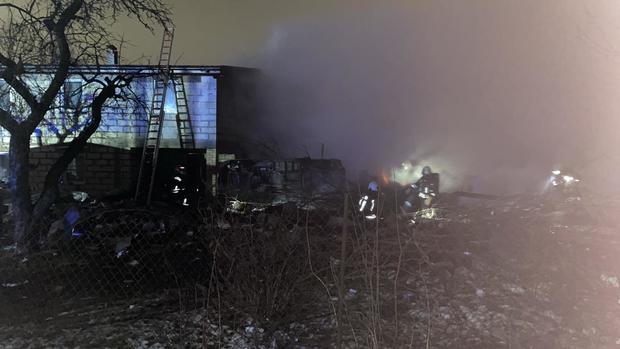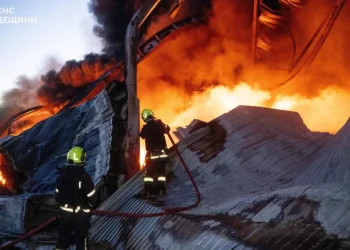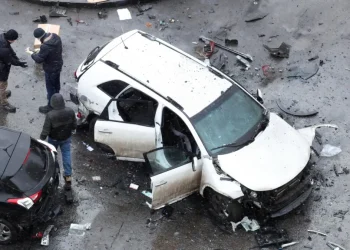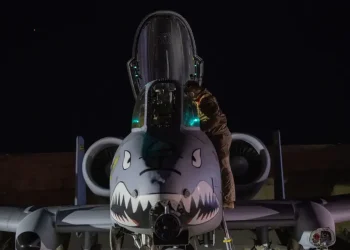DHL Cargo Plane Crash in Lithuania: Key Details and Concerns
A DHL cargo plane crashed near Vilnius Airport in Lithuania early Monday, claiming one life and raising concerns amid ongoing investigations into potential Russian sabotage. Here’s a detailed look at what we know so far.
Crash Overview
The cargo plane, operated by DHL partner SwiftAir, was en route from Leipzig, Germany, to Vilnius, Lithuania. According to Lithuanian authorities, the aircraft skidded several hundred yards during its emergency landing before crashing into a residential area. The crash set a house, smaller buildings, and a car on fire. Thankfully, the house’s 12 residents were evacuated safely.
One crew member out of the four aboard the plane died, confirmed Renatas Pozela, head of Lithuania’s firefighting and rescue department. Investigators are currently interviewing the surviving crew members.
Imagery and Impact
Debris from the plane, including burning packages, was scattered across the crash site in Vilnius. Emergency services cordoned off the area as they worked to contain the fire and assess the situation.
Suspicion of Sabotage
The crash occurred against a backdrop of heightened concern about Russian-inspired sabotage. Lithuanian State Security Department chief Darius Jauniskis acknowledged the possibility of terrorism but urged caution, stating, “It is premature to associate it with anything or to make any attributions.”
Over the past weeks, Lithuanian officials have been investigating incendiary devices allegedly sent on Western-bound planes. U.S. and European law enforcement agencies have also been examining incidents in which incendiary devices detonated at DHL hubs in Germany and the U.K. earlier this year. A source confirmed to CBS News that these incidents might be linked to Russian military intelligence or individuals acting in Moscow’s interests.
Potential Russian Connection
Lithuania and Poland, both NATO members, have repeatedly warned of Russian-inspired sabotage targeting EU and NATO allies. Lithuanian President’s security advisor, Kestutis Budrys, stated earlier this month, “We know who the source of these operations is. It is Russian military intelligence.”
This follows incidents involving incendiary devices disguised as common items, such as electric massagers, which were sent from Lithuania to the U.K. in July. One such device caused a fire outside Warsaw, and similar incidents in Germany and the U.K. prompted anti-terrorism investigations.
DHL’s Statement
DHL confirmed the crash in a statement, noting that the SwiftAir-operated plane performed an emergency landing about one kilometer (half a mile) from Vilnius Airport. The company expressed its commitment to assisting with the investigation but refrained from commenting on potential causes.
International Aviation Concerns
The crash has brought renewed attention to aviation security. The 2025 U.S. Homeland Threat Assessment, published in October, highlighted ongoing concerns about threats to aviation and air cargo systems. The U.S. Transportation Security Administration (TSA) emphasized its focus on mitigating risks by implementing additional security measures for cargo shipments bound for the U.S.
TSA’s multi-layered approach, detailed in its 2021 Air Cargo Security Roadmap, includes working closely with industry partners to enhance cargo safety.
Ongoing Investigation
As authorities continue to piece together the events leading up to the crash, they remain cautious about drawing conclusions. Investigators are examining the aircraft, speaking with crew members, and analyzing debris for signs of foul play. Lithuanian police have yet to confirm any direct connection between the crash and the incendiary device investigations.
Geopolitical Implications
Poland and Lithuania’s proximity to Russia and their support for Ukraine have made them potential targets for sabotage, officials say. As NATO members, both countries have called for vigilance against Russian interference in EU and NATO infrastructure.
The investigation into the crash, combined with ongoing probes into sabotage attempts, underscores the evolving nature of threats to international aviation.
This tragic incident raises questions about aviation safety and the role of international collaboration in addressing potential sabotage. As the investigation unfolds, authorities worldwide remain on high alert for similar threats.
This article was rewritten by JournosNews.com based on verified reporting from trusted sources. The content has been independently reviewed, fact-checked, and edited for accuracy, neutrality, tone, and global readability in accordance with Google News and AdSense standards.
All opinions, quotes, or statements from contributors, experts, or sourced organizations do not necessarily reflect the views of JournosNews.com. JournosNews.com maintains full editorial independence from any external funders, sponsors, or organizations.
Stay informed with JournosNews.com — your trusted source for verified global reporting and in-depth analysis. Follow us on Google News, BlueSky, and X for real-time updates.














